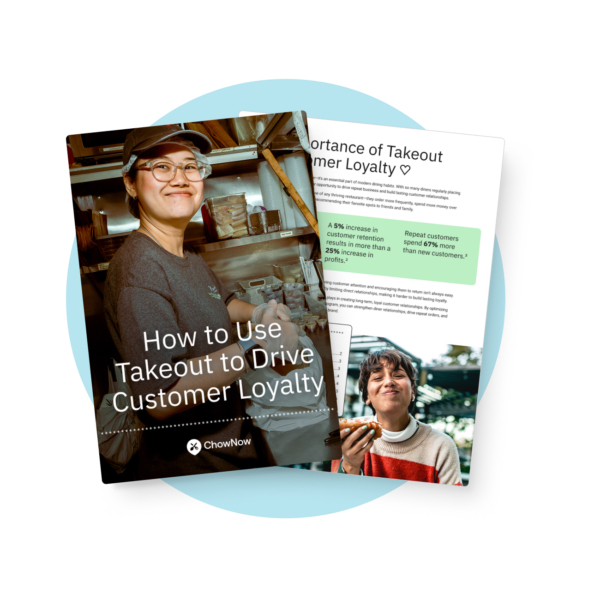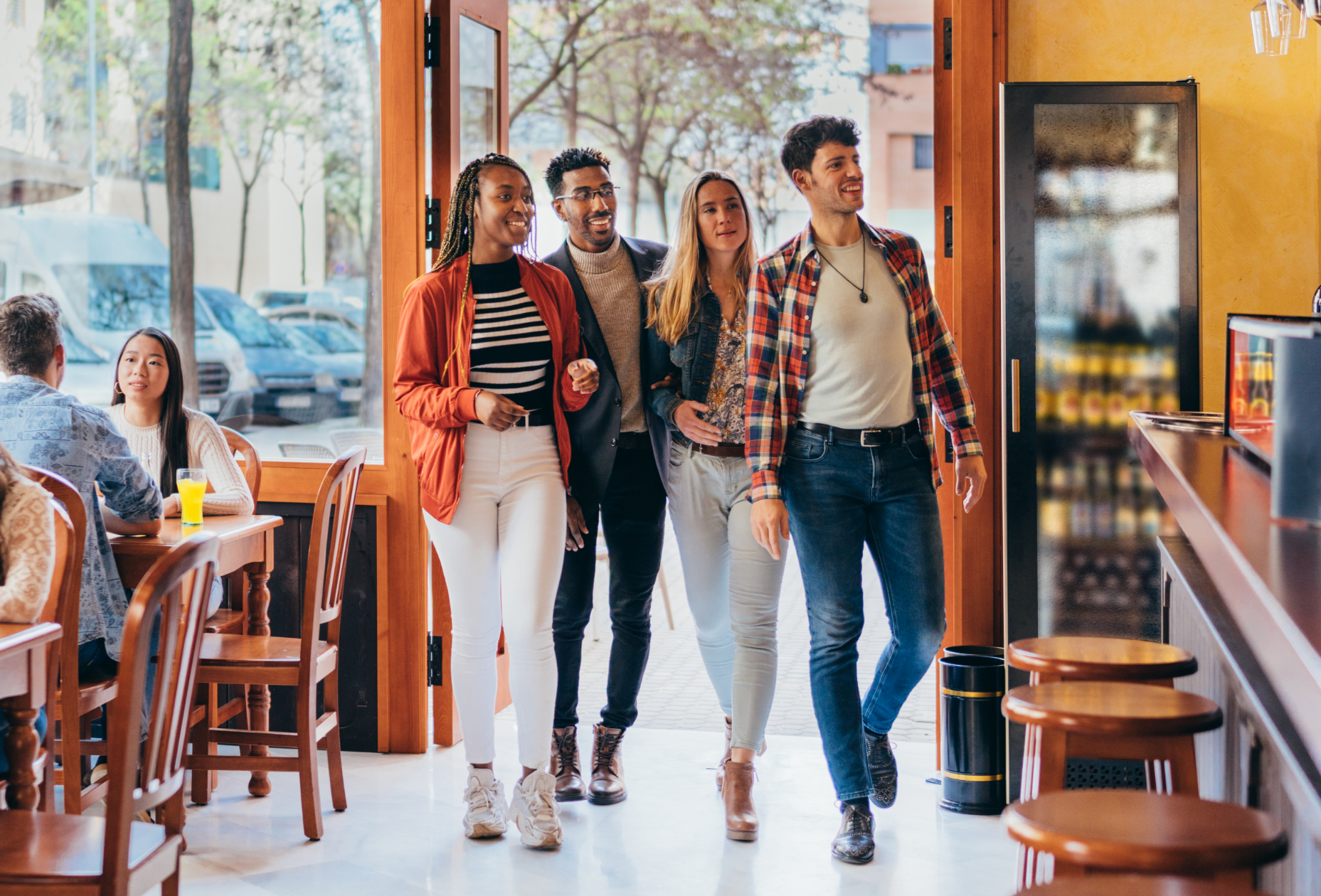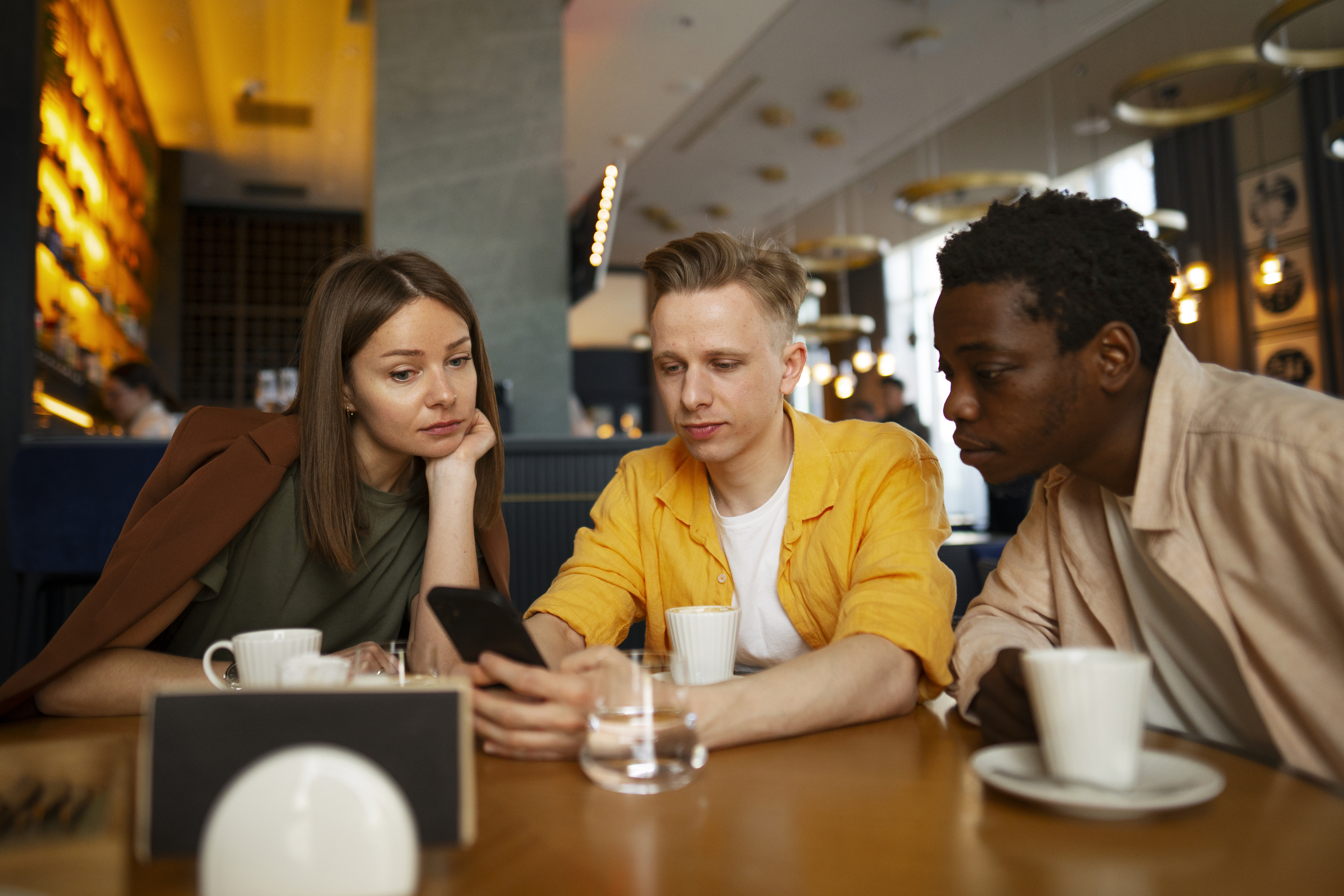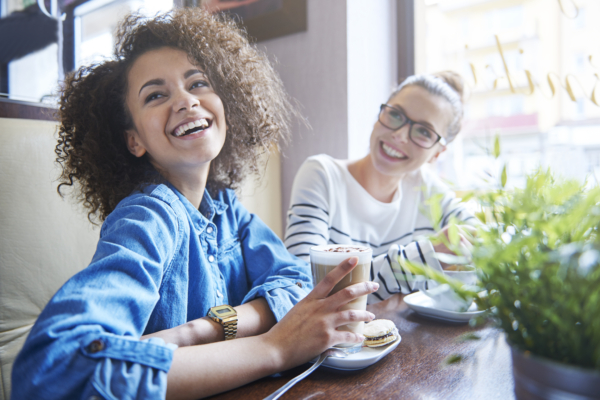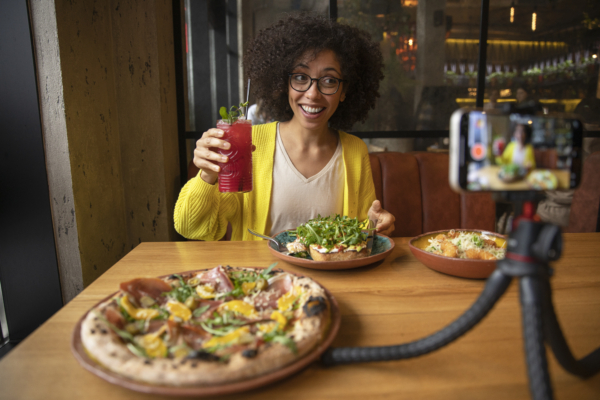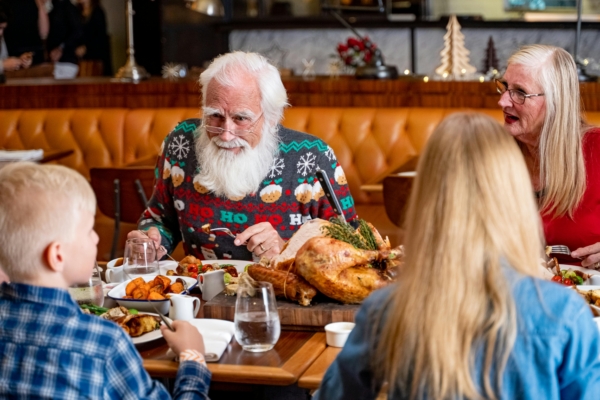Influencer Marketing For Restaurants: How To Turn Local Creators Into Loyal Promoters

Influencer marketing sounds like something reserved for big-name brands with massive budgets and full-time social media managers.
Because of this perception, many restaurant owners feel like running an influencer marketing campaign is a risky gamble: you give away free or heavily discounted food, cross your fingers, and then hope for a post that drives new business.
It’s easy to see why so many operators are skeptical.
But here’s the thing: when you team up with the right influencers, and set the relationship up the correct way, it doesn’t just “get you exposure”—it builds real word-of-mouth momentum, catches the attention of local diners, and turns a one-time post into a long-term collaboration with influencers who keep coming back.

With nearly 50% of U.S. diners trying out a new restaurant because of social media, now’s the time to make influencer marketing a part of your marketing strategy, without blowing your budget or partnering with the wrong people.
In this article, you will learn:
- How to use influencer marketing to increase awareness, credibility, and foot traffic
- How to find and connect with the right influencers who align with your brand
- How to track ROI and reuse influencer content across all your marketing channelsWhy Influencer Marketing Works for Restaurants
When a friend tells you about a restaurant, you’re significantly more likely to try it.
Influencer marketing for restaurants works the same way—just at a bigger scale.
Local influencers build their following by sharing restaurants they genuinely love.
When their followers visit and have a great experience, it reinforces the influencer’s reputation as a trusted voice in the local food scene.
For restaurant owners, that’s an amazing opportunity to gain instant credibility with a highly relevant audience that’s ready to eat.
Here’s why it works:
It positions your restaurant where locals are already paying attention
Your ideal diners are already scrolling through their favorite content creators’ feeds, looking for new places to eat.
By showing up in local influencers’ posts, your restaurant doesn’t just reach more people—it lands in front of the right potential audience, in a context they trust.
It generates content that feels real—not forced
The best influencer content doesn’t look like marketing—it looks like someone having a great time.
Whether that’s a selfie with your signature dish or a fun, time-lapse reel of the full dining experience, diners connect with this type of content.
It shows off your food while at the same time helping potential customers imagine themselves eating at your restaurant.
It helps drive foot traffic and online orders
Well-made influencer content can inspire people to take action and drive foot traffic the same day it’s published.
Depending on the goal of the post, you can encourage people to visit your restaurant in person or place an order online, creating a sense of urgency—tapping into the FOMO (fear of missing out) many people feel when they want to experience something for themselves.
How to Find the Right Influencers and Food Bloggers
Finding an influencer that’s a good fit for your restaurant is the trickiest part of social media marketing. Chasing high follower counts alone is a great way to waste time, money, and potentially your reputation.
The best results come from doing your homework to find creators that actually care about the food scene, your restaurant, and your story.
Here’s how to find the right partner for an influencer marketing campaign:
Focus on local creators with highly engaged, relevant audiences
You want to work with local influencers because their followers are almost entirely based in your city.
These creators—often called micro-influencers because their reach isn’t on a national or global scale—often have higher engagement rates than macro-influencers.
This means their followers are more deeply invested in their content because it pertains to the community they live in.
For example, this is a collaboration between Malai Kitchen and local influencer Dallas Food Nerd.
View this post on Instagram
Dallas Food Nerd does a great job of showing what Malai Kitchen offers while sharing their reel with the highly relevant audience of Dallas/Fort Worth locals.
Look beyond follower count—prioritize content quality and engagement

Follower count can be misleading. What matters more is how much people interact with their content and how well their posts can tell a story.
Take a few minutes to scroll through their feed—does their content feel genuine?
Are people responding to it, and is the creator replying?
Are they actually posting about restaurants?
Look for restaurant influencers who have a strong visual style, a consistent voice, and an audience that listens.
Use Instagram, TikTok, Yelp, and local hashtags to discover creators
Most food influencers live on visual platforms like Instagram and TikTok. Search local hashtags (like #LAFoodie or #DenverEats) to see who’s posting regularly.
You can also browse Yelp’s Elite users or look into free or paid influencer databases to streamline the search.
And don’t forget to check who’s already tagging your restaurant—your next partner might already be a fan.
Structuring Collaborations for Maximum Impact
Once you’ve found a content creator who aligns with your brand, the next step is setting up a partnership that works for both of you.
It’s unfortunate how often influencer campaigns fall flat because expectations weren’t clear, or the exchange didn’t feel fair.
Choose the right type of partnership: tasting events, paid posts, giveaways, etc.
Not every collaboration has to be a paid post. You might host a tasting event, run a giveaway, offer a behind-the-scenes kitchen experience, or invite someone to cover a special menu launch.
Some restaurant influencers are happy to stop by for a quick visit and post in exchange for a comped meal. Others may charge for a dedicated video or partner on a giveaway to boost visibility.
Think about your goals—do you want content, reach, repeat visits? Then choose a format that matches.
Set clear goals and expectations up front
Before the food hits the table and cameras are rolling, come to an agreement on the basics:
What kind of social media content are you expecting?
How many posts?
When will it go live?
Don’t try to over-script the experience—authenticity matters. The best influencer partnerships leave room for the creator’s voice while still aligning with your business goals.
Offer a strong value exchange (free meal, compensation, access, etc.)
The influencer partnership should feel like a win-win. Comping a meal is a good start, but depending on the size and marketing impact of the creator, expect to pay additional compensation.
If you respect their time and craft, they’ll respect your business—and in return, you’ll get authentically represented on a social media platform that reaches your target audience.
Encourage storytelling over promotion for more authentic content
Great influencer content doesn’t feel like an ad. To pull this off, though, you need to share your story, your ingredients, and your inspiration for starting and running your restaurant.
Followers love learning about the “why” somebody does something.
The more context you provide, the easier it is for creators to create genuinely engaging content that resonates with their audience.
Tracking Performance and ROI
You might love the content you’re putting out, but if it’s not connecting with your audience, you’ll have to make adjustments.
To get the most out of your influencer marketing efforts, you’ll want to track performance just as you would with any other marketing strategy.
Here’s how to track your influencer campaign to help your business grow.
Use unique promo codes or trackable links to measure conversions
Create a custom discount code or URL that the influencer can share. That way, you can see exactly how many people placed an order or visited your site through that post.
For example, this is a collaboration post with Josie’s Pizza in Windermere, Florida, and local influencer Jessica Cardos.
View this post on Instagram
In the description, there’s the code “5off40” to get $5 off orders $40+ placed online through ChowNow.
This code makes it the simplest and most effective way to tie influencer content to real orders.
Monitor engagement—not just reach
A huge audience doesn’t mean much if no one’s paying attention. Pay close attention to likes, comments, shares, and saves.
These key metrics tell you if people are actually interested in what’s being shared and how much influence the post is having.
Ask influencers to share post-performance insights
Most social media influencers have access to performance data and are more than happy to share it with you (if not, that’s a red flag).
Set the expectation at the beginning of your partnership that you’ll need the data to help you both understand what worked, what didn’t, and how to optimize your next influencer marketing campaign.
Evaluate traffic or online orders during and after campaigns
This can be difficult to judge just by observation, which is why unique promo codes and trackable links are so important for understanding if your influencer marketing efforts are making a difference.
That being said, pay attention to any increases in website traffic, online orders, or in-person visits during and after the social media marketing campaign.
Asks guests if it’s their first time visiting, and how they heard about you. To learn more ways to track your marketing efforts, read our article, How to Measure and Improve Restaurant Marketing ROI.
Repurposing Influencer Content Across Your Marketing Channels
One of the biggest benefits of influencer marketing is that you can use a single post across multiple platforms.
Repurposing influencer content you’ve already paid for allows you to stretch its value and create consistency across every marketing channel you use.
Here’s how to make the most of it.
Repost influencer content to your own feeds
Establish the right to share your collaboration content across multiple platforms up front, then post on your own social channels, like:
- TikTok
It saves you time on content creation because you’re not starting every post from scratch.
Use quotes and images in your emails and ads
Take standout lines from their post and turn them into visual assets for email campaigns and paid promotions.
A great one-liner from a food influencer can make a stronger impact than a branded headline.
Embed influencer videos or stories on your website
Highlight reels, testimonial clips, or Instagram stories can easily be added to your homepage or menu page.
This type of user-generated content builds trust and gives potential diners a taste of what they can expect.
For example, this collaboration post with Friendship Kitchen and Ashley Mannely Robles is a great video for a website.
View this post on Instagram
It shows clear footage of food and drinks along with a recommendation of “must-try” dishes. People can immediately see what it’s like dining at Friendship Kitchen and the quality of their food.
Build a content library to reuse during slower months or promotions
Save everything from your influencer collaborations so you can reuse it when you need it most. This might include:
- Static photos
- Video clips
- Captions or written reviews
- Instagram Stories
- Reels or TikTok videos
- Behind-the-scenes footage
Having this content ready makes it easier to fill your calendar during slower seasons, holiday lulls, or last-minute promotions, without scrambling to create content from scratch.
It’s a smart way to keep your overall marketing strategy consistent and cost-effective, even when business is slower.
Influencer Marketing for Restaurants Frequently Asked Questions
What’s the difference between a food blogger and a food influencer?
Food bloggers typically publish longer-form reviews or features on websites, while food influencers focus on short-form content like Reels, TikToks, and Stories. Both can help promote your restaurant, but influencers tend to deliver faster reach on social media platforms.
How much should I budget for an influencer campaign?
It depends on the creator’s audience size, content quality, and deliverables. Some micro-influencers will trade content for a complimentary meal, while others—especially those with high engagement—may charge a few hundred dollars or more per post. Build this into your marketing strategy just like you would with ads or events, and don’t be afraid to start small, test what works, and scale your influencer marketing efforts from there.
Can small restaurants benefit from influencer marketing?
Absolutely. In fact, restaurant influencer marketing often works best for smaller brands because it feels more authentic. Local influencers help build meaningful connections with your community and create visibility without the cost of traditional ads.
What legal or disclosure guidelines should I know about?
The FTC (Federal Trade Commission) requires that sponsored content be clearly disclosed. That means influencers should use tags like #ad or #sponsored if they’re being compensated. Make sure your agreements reflect this, and be transparent about the nature of the influencer partnerships you’re forming.
How do I make sure the influencer actually shows up or delivers?
Set expectations upfront. Confirm the date, time, and deliverables in writing—email is fine. Most influencers work professionally, but a clear agreement helps protect your time and investment. If you’re unsure, ask for references or examples of past influencer content before agreeing to anything.
Turn Social Content Into Real Business Growth
Influencer marketing doesn’t have to feel like a gamble. When you partner with the right influencer, it can lead to an explosion of growth in a relatively short amount of time.
Set clear expectations, put everything in writing, and focus on building a relationship that leads to authentic content—not just a one-time post.
Contact ChowNow to learn how you can create and manage discount codes for your commission-free online ordering to help with tracking influencer partnerships.
